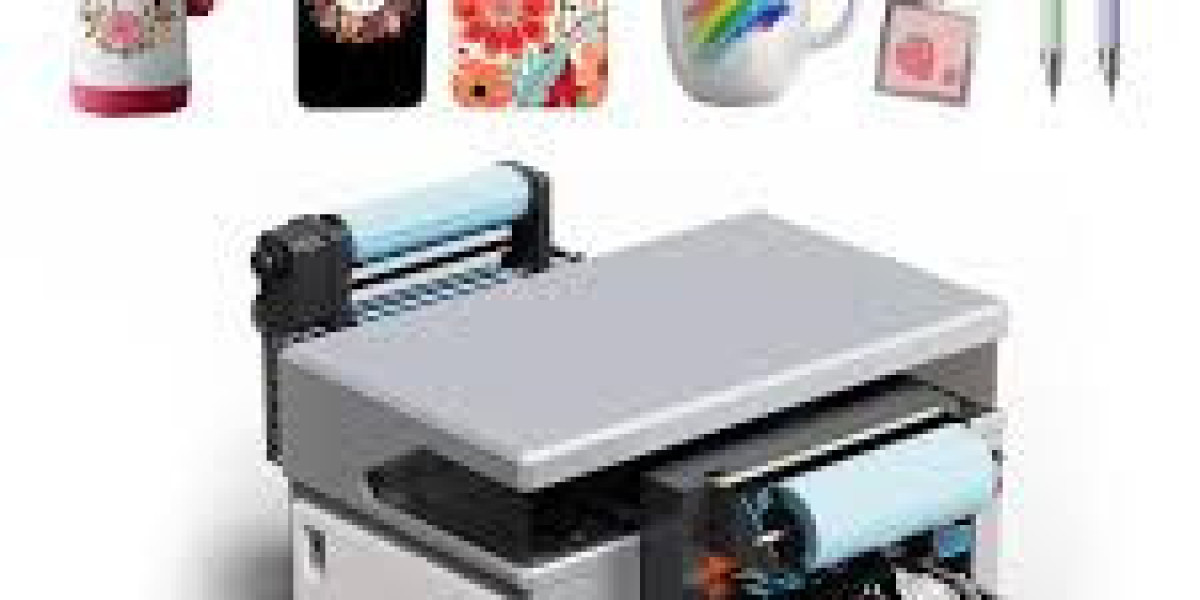In the world of digital printing, few technologies have created as much excitement and transformation as the UV printer. This innovative machine has reshaped how businesses, artists, and manufacturers produce visual designs, offering exceptional quality, flexibility, and speed. With the ability to print directly on almost any material and instantly cure the ink with ultraviolet light, UV printers are setting a new standard in modern printing.
What Is a UV Printer?
A UV printer is a type of digital printer that uses ultraviolet (UV) light to cure special inks as they are applied to a surface. Unlike traditional printers that rely on heat or air drying, UV printers use UV LED lamps that instantly harden the ink, resulting in vivid, durable, and scratch-resistant prints. This instant curing process eliminates smudging, speeds up production, and makes the prints immediately usable.
What truly makes UV printers revolutionary is their versatility. They can print on a wide variety of materials such as wood, metal, glass, leather, ceramic, plastic, and acrylic. This flexibility allows businesses to create everything from signage and phone cases to custom décor and product packaging—all with stunning precision.
How Does UV Printing Work?
The process of UV printing involves three main steps: ink application, UV light exposure, and curing. When printing begins, the machine sprays tiny droplets of UV-curable ink onto the chosen material. As soon as the ink lands on the surface, UV lamps pass over it, solidifying the ink instantly. This rapid curing forms a tough layer of color that adheres tightly to the surface without spreading or soaking in.
This method allows for high-resolution images, sharp details, and vibrant color output. Additionally, UV printers can apply multiple layers of ink, enabling the creation of textured effects such as embossing or gloss finishes that add a 3D-like appearance to prints.
Key Advantages of UV Printing
The reason UV printers have become so popular across industries is because they offer numerous benefits over traditional printing methods.
1. Versatile Material Compatibility
UV printers can print on almost any surface — whether flat, curved, rigid, or flexible. This includes materials like plastic, glass, metal, wood, fabric, and ceramics.
2. Instant Drying and Higher Productivity
Because the ink cures immediately under UV light, prints come out completely dry. This eliminates waiting times, allowing businesses to complete projects faster and improve workflow.
3. Exceptional Print Quality
The cured ink remains on the surface, resulting in crisp, vibrant, and detailed prints with accurate color reproduction.
4. Long-Lasting Durability
UV-cured prints resist fading, scratching, and moisture, making them suitable for both indoor and outdoor use.
5. Eco-Friendly Printing Process
UV printing is a more environmentally friendly option since it produces minimal waste, emits few volatile organic compounds (VOCs), and uses energy-efficient LED curing systems.
6. Cost Efficiency Over Time
Though UV printers may have a higher initial cost, they save money in the long run by reducing ink consumption, setup time, and material waste.
Different Types of UV Printers
There are various kinds of UV printers designed for different needs and production scales.
Flatbed UV Printers:
These are ideal for printing on rigid materials such as glass, metal, and wood. They are commonly used for signage, furniture design, and branding applications.
Roll-to-Roll UV Printers:
These machines are designed for flexible materials like vinyl, films, and banners. They are perfect for large-format advertisements and wall graphics.
Hybrid UV Printers:
Hybrid printers can handle both rigid and flexible materials, offering maximum versatility for businesses that work with diverse substrates.
Desktop UV Printers:
Compact and efficient, these small-scale printers are ideal for printing on smaller items such as phone cases, pens, gifts, and awards.
Common Applications of UV Printing
The applications of UV printing span a wide range of industries. Some of the most popular uses include:
Signage and Advertising: High-quality banners, displays, and billboards that can withstand outdoor weather conditions.
Product Customization: Personalized items like mugs, power banks, pens, and phone covers printed with unique designs or logos.
Interior Décor: Custom wall panels, glass art, and acrylic decorations printed with full-color images.
Packaging and Branding: Luxury packaging, promotional boxes, and product labels enhanced with gloss, texture, and embossed finishes.
Electronics and Gadgets: Logos and identification marks on devices such as laptops, keyboards, and phone accessories.
The Business Value of UV Printing
The UV printing industry is growing rapidly, largely due to the global demand for personalized and on-demand products. Entrepreneurs and small businesses can use UV printers to offer custom designs, name engravings, and corporate branding services.
For example, a small shop equipped with a desktop UV printer can produce hundreds of personalized keychains or phone cases each day. Larger companies use industrial UV printers for mass production, including packaging, signage, and labeling.
Benefits for Businesses Include:
Ability to print short runs cost-effectively.
Opportunity to offer unique and customized products.
High margins due to premium print quality.
Fast turnaround for customer orders.
Maintenance Tips for UV Printers
To keep a UV printer performing optimally and ensure long-lasting results, regular maintenance is essential.
Clean Printheads Daily: This prevents ink clogs and ensures smooth operation.
Check UV Lamps Regularly: Replace or clean the lamps periodically to maintain proper curing performance.
Use Approved Inks: Stick to inks recommended by the manufacturer to avoid damage and maintain print consistency.
Control the Environment: Keep your printer in a clean, dust-free space with stable temperature and humidity levels.
The Future of UV Printing Technology
As digital printing continues to evolve, UV printers are becoming faster, smarter, and more energy-efficient. New innovations include automated color calibration, 3D UV printing, and AI-powered workflow optimization. These developments will allow users to produce even more realistic textures, metallic effects, and detailed prints.
Additionally, the shift toward sustainable production practices is boosting UV printing’s popularity. Since UV printing uses less energy and generates minimal waste, it aligns well with the global move toward environmentally friendly manufacturing.
Starting a UV Printing Business
For entrepreneurs, a UV printer represents an exciting business opportunity. Here’s how to get started:
Identify Your Market: Focus on a niche such as signage, promotional gifts, or custom décor.
Select the Right Printer: Choose a machine based on your budget, materials, and volume requirements.
Learn Design Skills: Master software like Adobe Illustrator or CorelDRAW to create attractive prints.
Build an Online Presence: Promote your services through social media, e-commerce platforms, and local marketing.
Offer Customization: Personalized products attract more customers and allow higher profit margins.
A UV printing business has low operating costs and can scale quickly, especially if you offer high-quality custom designs.
Environmental Advantages of UV Printing
Traditional printing methods often involve solvents, water-based inks, and heat, which can be harmful to the environment. UV printing eliminates many of these issues. It doesn’t release harmful fumes or require drying time, and the LED lamps consume less power. As a result, UV printing offers an eco-conscious alternative that supports both creativity and sustainability.
Conclusion
The UV printer stands as one of the most powerful innovations in modern printing technology. Its combination of precision, flexibility, and eco-friendliness makes it an ideal solution for businesses of all sizes. Whether you’re producing signage, packaging, personalized merchandise, or industrial parts, UV printing provides unmatched quality and speed.
As technology continues to advance, UV printers will only become more efficient and accessible, enabling more people to explore the full potential of custom printing. In a world where creativity and efficiency drive success, the UV printer remains the perfect tool to turn imagination into reality.








